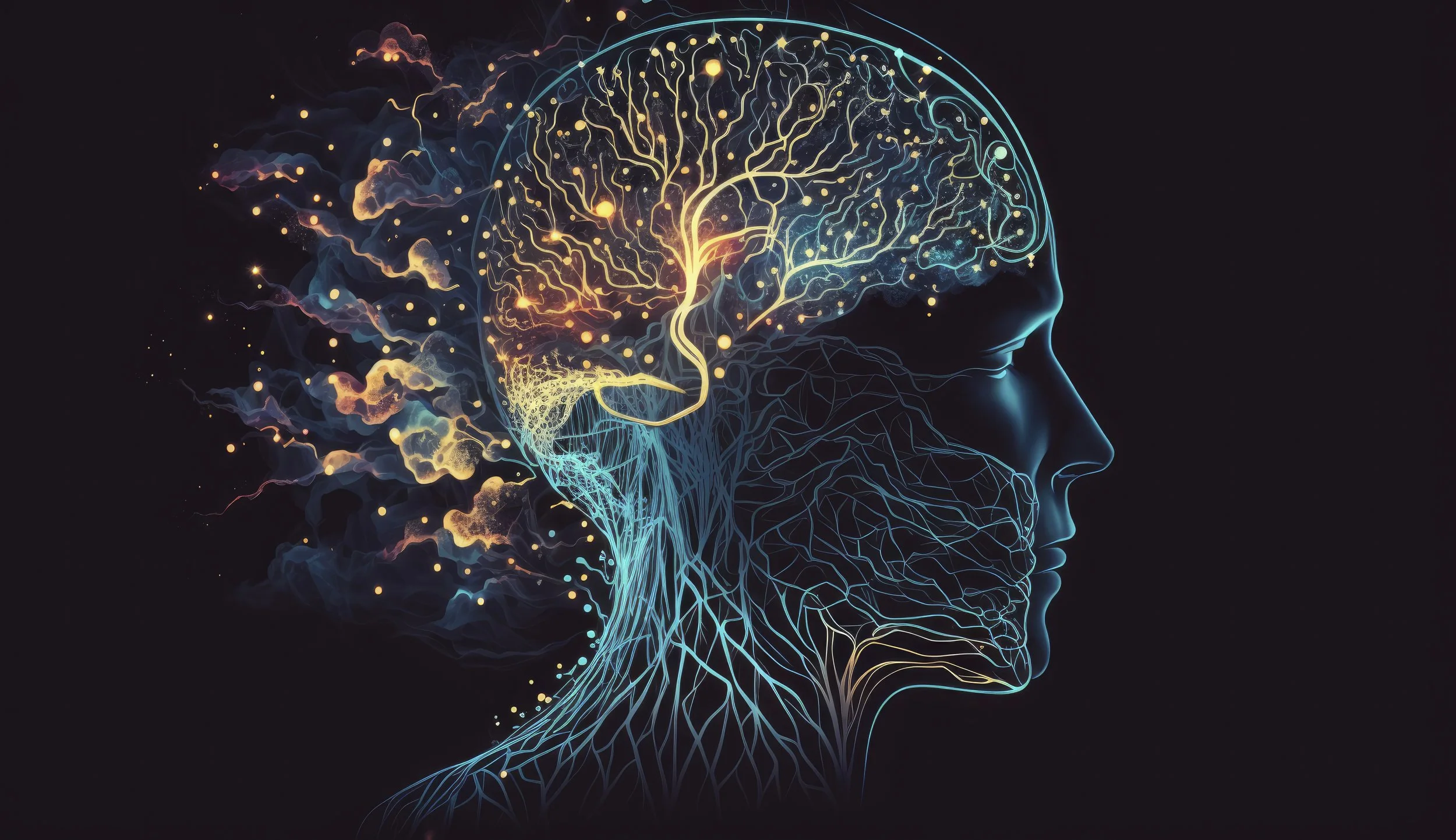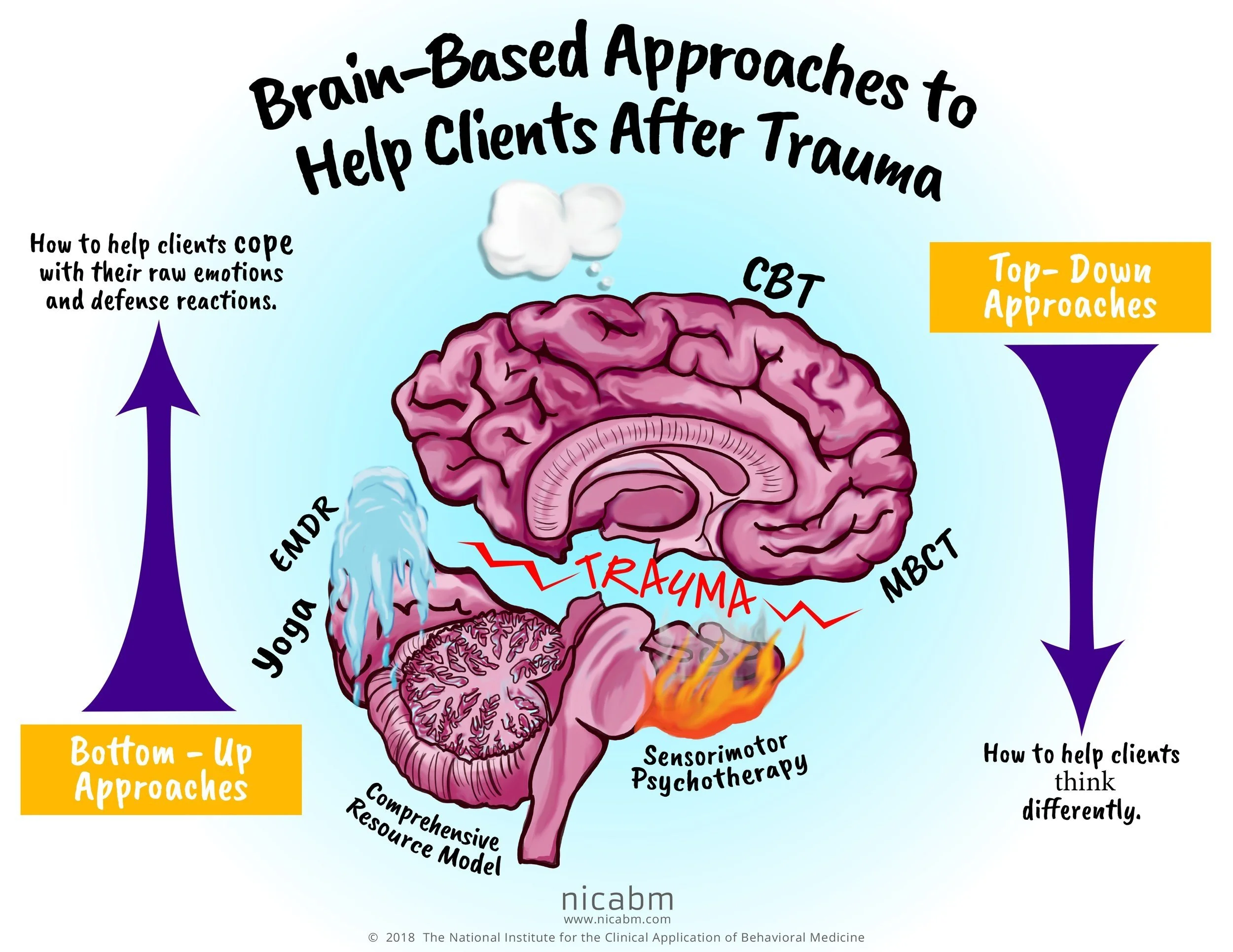What is Brainspotting?
Brainspotting is a bottom-up, neurophysiological approach to treating trauma. Bottom-up treatment starts with the lower brain and is centered around addressing the automatic responses, dysregulation or feelings in the body that make a person feel unsafe.
Brainspotting utilizes eye position and eye movements to “locate, focus, process, and release experiences and symptoms that are typically out of reach of the conscious mind and its cognitive and language capacity (Grand, n.d).” In other words, working to identify and process the neurophysiological sources of emotional and physical pain, trauma, dissociation, and other symptoms that can feel impossible to do when you are too dysregulated or unable to access the logic and awareness to work through it intellectually.
Brainspotting is a bottom-up, neurobiological approach to treating trauma. Bottom-up treatment starts with the lower brain and is centered around addressing the automatic responses, dysregulation or feelings in the body that make a person feel unsafe. This is different from a top-down treatment that requires you to use the neocortex, frontal lobes and prefrontal lobes (top and front areas of the brain) to think, process, verbalize, and make choices to change behaviors. All of those functions require an ability to use reasoning and awareness that is not always accessible to untreated trauma survivors.
Image showing the difference between bottom-up and top-down approaches. (Buczynski, 2022)
We know that trauma survivors tend to feel physical sensations and/or dysregulation before their brain can integrate those biological responses to interpret and verbalize that information as thoughts. This makes bottom-up treatments such as brainspotting so effective in trauma treatment when the client may not be ready or able to talk through their thought patterns or adjust how they interpret and respond to situations.
Starting with a bottom-up approach such as brainspotting enables a client to start healing by regulating and integrating the parts of the brain. This integration is essential for making sense of feelings and differentiating danger in the past from the here and now.
Simply put, it enables you to feel and process those sensations that have otherwise been too painful, activating, or uncomfortable to sit with on your own. The therapist is there to provide support, calmness, and a feeling of being protected through attunement, or to be connected and responsive to the difficulties and pain of processing the trauma.<br>
The Brainspotting Process
The therapist will help you identify and maintain focus on a “brainspot” where physical sensations are connected to emotional or traumatic issues. As you continue gazing at this spot, you are able to process and release or ease the physical dysregulation. Bilateral music may also be utilized during sessions.
You will be encouraged to say as much or as little as you want through the brainspotting treatment while also noticing thoughts, sensations, or feelings that come up–just being curious and not judging. You may or may not “feel” a significant difference and your brain will continue to process even after the session. Some clients report feeling a little brain foggy or especially emotional after a session, but the experience will vary even from session to session.
Resources
About Brainspotting What is Brainspotting? (n.d.). Brainspotting. Retrieved March 3, 2025, from https://brainspotting.com/about-brainspotting/what-is-brainspotting/
Buczynski, R., PhD. (2022, November 9). InfOGraphic: Brain-Based Approaches to Help Clients AfterTrauma. NICABM. https://www.nicabm.com/brain-based-approaches-to-help-clients-after-trauma/
Micevych, P.E. (2018, June 16). What is Neurobiology? A UCLA Doctor Explains. UCLA Medical School. https://medschool.ucla.edu/blog-post/what-is-neurobiology
Neurobiology is…”the biology of nerve cells and glial cells that make up the brain — how they fit together and make circuits, and how those circuits process information and regulate behavior, endocrine function, emotions, breathing, etc. (Micevych, 2018).”

